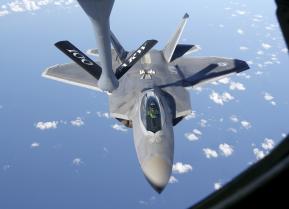Su-75: Russia's Cheap Stealth Fighter Is a Giant Question Mark
With first flights pushed back from 2023 to 2024 and beyond, it remains to be seen if the Su-75 Checkmate will ever get off the ground.
Russia’s Su-75 Checkmate fighter has had a troubling life. Initially envisioned as a cheap fifth-generation fighter intended for export, it has so far failed to get off the ground – both figuratively and literally.
In spite of the many challenges facing the Checkmate, its designers at the United Aircraft Corporation (UAC), a Russian aerospace company heavily subsidized by the Russian government, rolled up some significant upgrades and changes last month in the form of patents.
An Overview of the Checkmate
By all appearances, the Su-75 is the perfect entry to the global market to compete with the F-35. A lightweight fifth-generation fighter billed at only $25-30 million, only a third of the cost of the F-35 Lightning. It was with this idea in mind that the UAC unveiled a static prototype of the Checkmate at the MAKS airshow in 2021.
Initially, the aircraft was well received, with nations such as India and Vietnam expressing interest in purchasing early models. Additionally, the United Arab Emirates signed on to partner in the development of the Checkmate.
The design is typical of a fifth-generation fighter, with diverterless supersonic inlets, internal weapons bays, and radar-absorbent coating all designed to reduce radar cross-section (RCS) and make the Checkmate a stealthy fighter. Inside, the cockpit appears to be laid out almost identically to the Su-57. Its avionics include active electronically scanned array radar, a must in modern fighters as well as open architecture code which greatly eases the update process.
Su-75: Updates
Several months ago, the UAC filed new patents, which suggest the direction of development for the Su-75. Its overall shape appears to be modified, with larger wings that seem to have a smaller RCS and an enlarged fuselage which suggests either higher capacity weapons bays, larger fuel tanks, or both.
The bigger updates come in the form of a two-seat variant, which may be used for training or other missions, and an unmanned or “optionally” manned variant. The driving force behind such technology is the idea of a pilot in an F-35 or Su-75 managing several unmanned air combat aircraft, essentially being the flying quarterback. While the new update may look and sound as though the Checkmate is developing nicely, in reality, it means little and does not address the problems facing the Su-75.
It has been noted that these modifications are a natural part of the development process of new aircraft and do not represent a drastic shift in design or thinking on fifth-generation aircraft. Furthermore, they do nothing to rectify the issues previously noted such as lack of resources due to international sanctions as well as fading international interest following Putin’s invasion of Ukraine.
So far, the UAE has pulled out of its partnership deal and the Russian aerospace has struggled to field Su-57s for domestic consumption let alone diverting valuable resources to an export program. In all, these updates may renew interest in the Su-75 Checkmate program or spur additional consideration from other countries; however, none of that will matter if the airplane never flies.
With first flights pushed back from 2023 to 2024 and now beyond, it remains to be seen if the Su-75 Checkmate will ever get off the ground.
Maya Carlin, a Senior Editor for 19FortyFive, is an analyst with the Center for Security Policy and a former Anna Sobol Levy Fellow at IDC Herzliya in Israel. She has by-lines in many publications, including The National Interest, Jerusalem Post, and Times of Israel. You can follow her on Twitter: @MayaCarlin.


